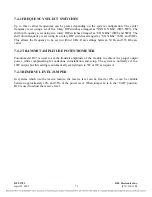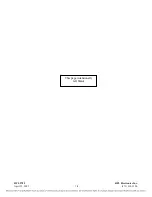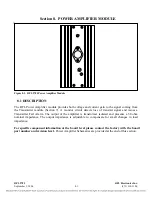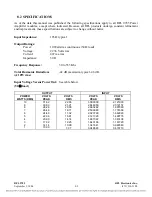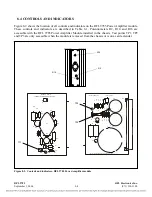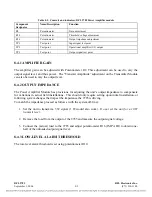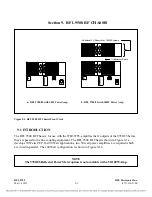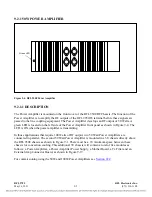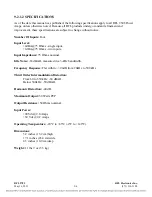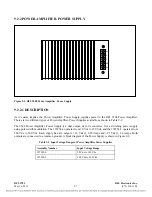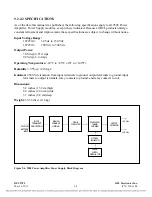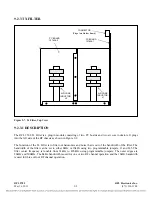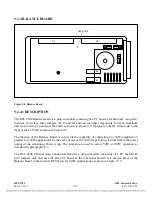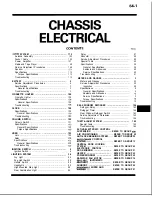
8.3
THEORY OF OPERATION
Refer to the schematic diagram in Figure 8-3 for the following discussion.
The design of the RFL 9785 power amplifier is based on a single hybrid power operational amplifier,
U1. The input signal is ac coupled through C1. The voltage gain of the amplifier is determined by the
ratio of feedback resistor R4 and input resistors R3 (fixed) and R2 (variable). The output of U1 drives
the impedance matching transformer T1. This transformer has a 1:4 turns ratio, provides isolation, and
transforms the 3.125 ohm output Z of the amplifier to the 50 ohm line impedance. The 3.125 ohm
output Z is controlled by current feedback provided by sense resistor R18 and input resistor R17
(fixed) and R16 (variable). The voltage developed across R18 is proportional to the load current and
when combined with voltage feedback the amplifier’s virtual output impedance can be determined.
Resistors R5 and R6 provide current limiting to protect the power operational amplifier from over-
current conditions. Output over-voltage protection is achieved by high-speed rectifiers CR4 and CR6
and transorbs CR3 and CR5. These devices steer and clamp high voltage transients to safe levels, thus
preventing any damage to the power amplifier output stage.
Comparator U2, and its associated components form the Transmitter Fail detect circuit. The input to
the circuit comes from the output of U1, which is half-wave rectified by CR7. This signal is then
averaged by R8 and C11. Potentiometer R10 is used to set the desired threshold voltage. R15 is
included to provide positive feedback for hysteresis.
RFL 9785
RFL Electronics Inc.
September 1, 2006
8-3
(973) 334-3100









